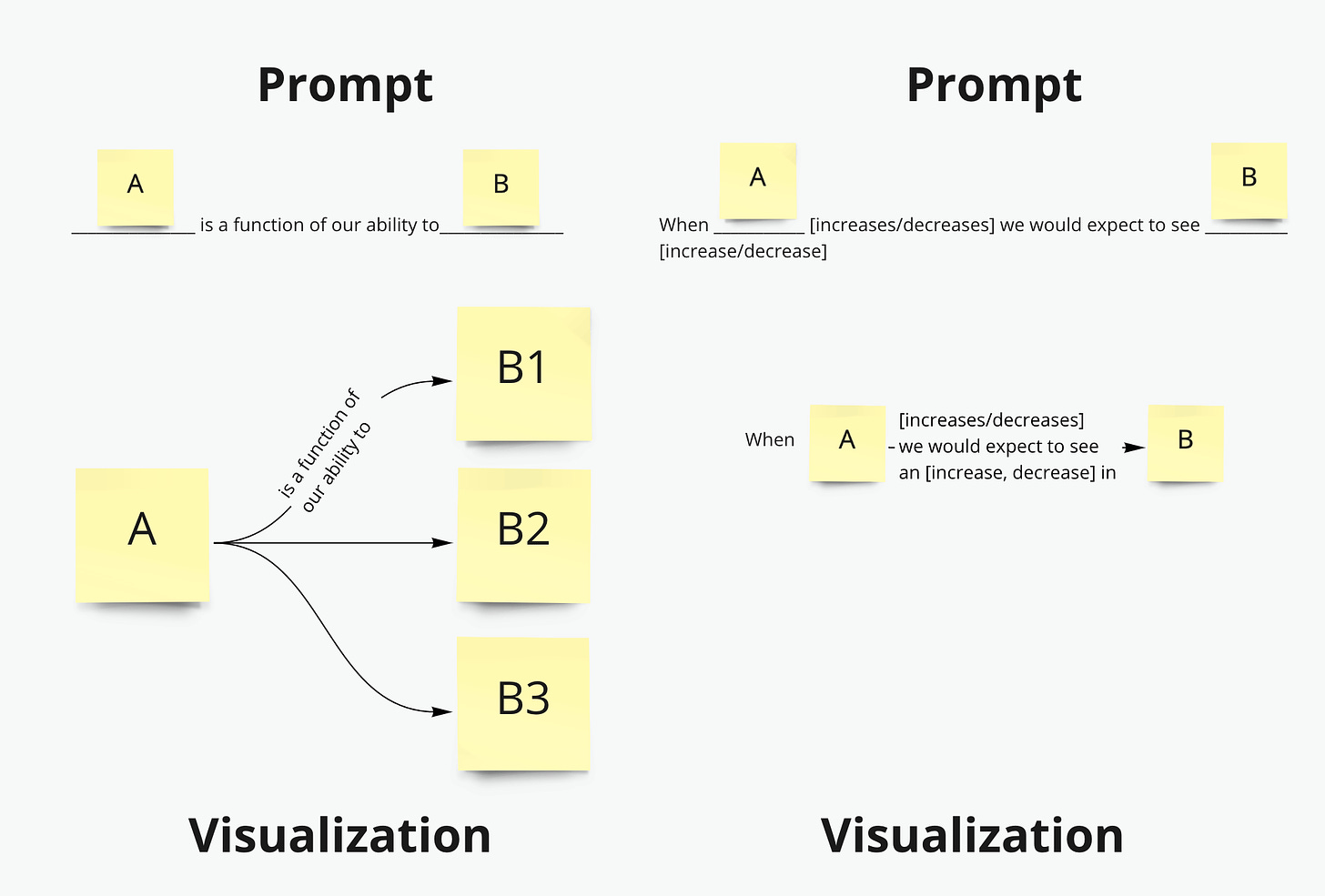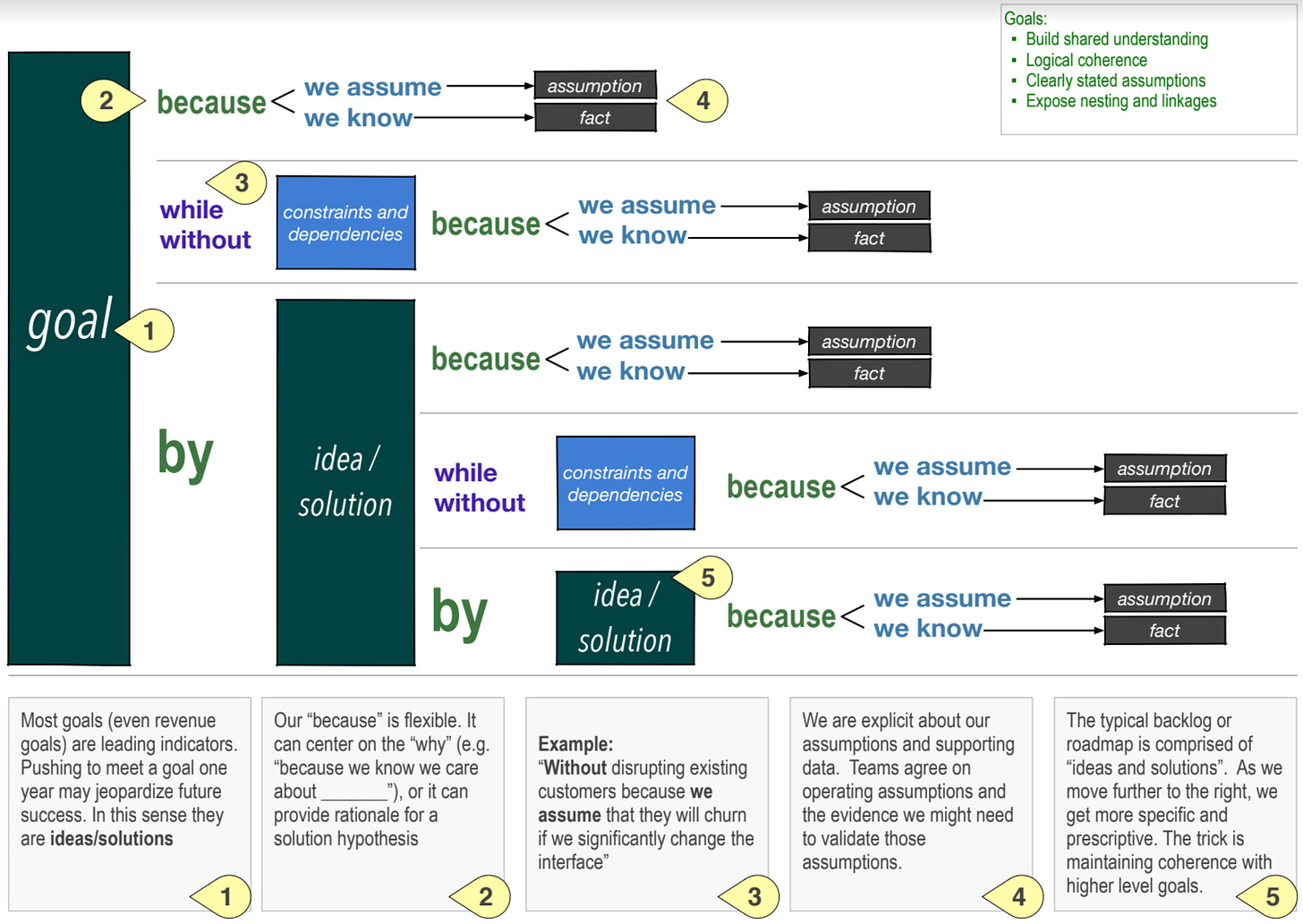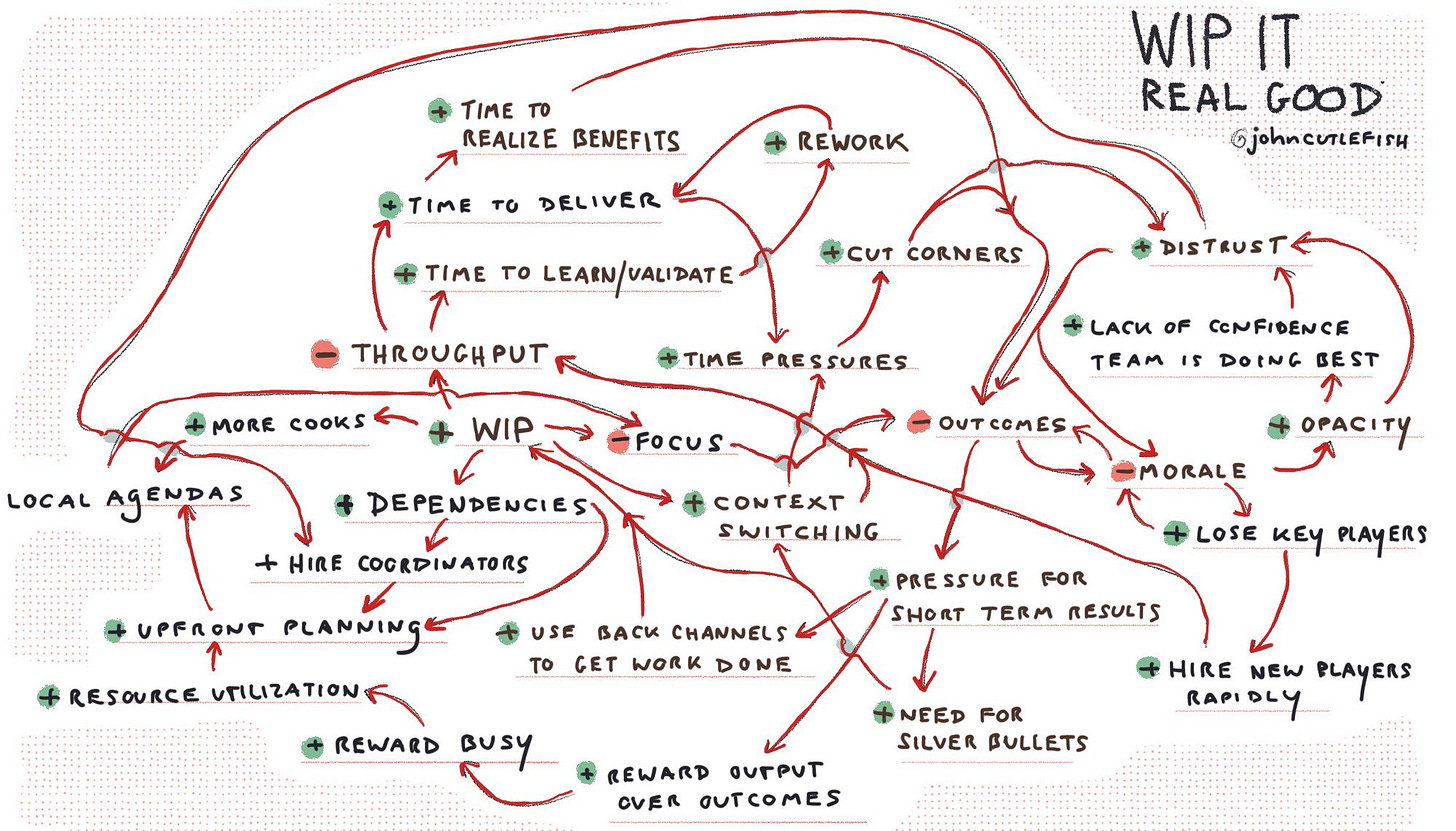Recent feedback:
I enjoy the blog, but as a new subscriber I can only withstand so many “thinky” pieces. Too much mess. Can you write an actionable post with examples?
An Actionable Post With Examples coming right up!
I started doing product management-like things in the early-2000s. I have always relied on various types of diagrams, trees, flywheels, and maps. Comparing notes, it seems like lots of product managers do this instinctively, and freestyle their own methods. Not sure why — maybe because the job is about context framing at different resolutions.
Others learn more formalized/published methods (e.g. MECE, causal relationship diagrams, hypothesis trees, assumption maps, hierarchy diagrams, structural causal models, affinity diagrams, impact maps, driver trees, opportunity/solution trees, etc.).
Whatever works for the job at hand! No shame in rolling your own to solve a problem, and finding out later that it is a "thing". Almost everything is a thing!
As part of North Star Workshops at the day-job (Amplitude), I spend a lot of time making “trees” and loops with teams. It occurred to me a couple months ago that a good introduction to tree/loop-making might be basic prompts. It worked in our workshops! Once you master this prompt idea, you can create new types of trees and methods!
In this post I will share a couple basic prompts (and an example for each).
You could visualize the prompts as a "tree", or loop, or network of sorts.
OK, let’s get started.
Our ability to ________ is a function of our ability to ________
Our ability to process transactions is a function of our ability to:
ensure the legitimacy of the transaction
match and access purchaser information in a timely manner
and route the transaction through the most cost effective processing workflow.
Note: Useful for capability mapping! And value chains.
________ has a number of contributing factors, including ________
High work in progress at ACME has a number of contributing factors, including
over-burdened shared teams
incentives to increase planning in progress
and large batch sizes.
Tip: Throw in a “we’re guessing” or “we hypothesize” or “based on observations, we’re increasingly confident that…” for effect. Suggesting cause is a big deal.
When ________ [increases/decreases] we would expect to see __________ [increase/decrease]
When WIP decreases, we would expect to see flow efficiency (proportion of touch time to total lead time) improve.
Note: Helpful for CRDs, loops, flywheels, etc. Like…
To [increase/decrease] ___________, we have a number of options including ____________
To increase data trustworthiness, we have a number of options including
prioritizing frequently used events over less frequently used events
encouraging teams to create “reference charts” with simple counts, and
providing tools for administrators to onboard new employees more effectively.
Note: Great for brainstorming! Shoot for 3+
To [increase/decrease] ___________, we have a number of options including attempting to [increase/decrease] ___________.
To increase data trustworthiness, we have a number of options including
increasing the rate of “first event selected→used in insights”
increasing the rate of “forking” from existing charts (ideally basic event segmentation charts)
decreasing the time from new user invite to first successful broadcasted learning.
Note: See the subtle shift here? Options, but with impact instead.
________ can be broken down into the following subtopics: ________
Product prioritization can be broken down into the following subtopics:
model building
bet framing
bet assessment
accounting for uncertainty
popular models (e.g. kano, etc.)
the concept of a bet portfolio – prioritizing across different bet shapes.
Note: Probably reminds you of paper-writing in school.
________ is an output of the following inputs: ________
Customer likelihood to renew is an output of the following inputs:
perceived return on investment
depth of integration into other company tool stacks
perceived task efficiency (which we believe is correlated with actual task efficiency)
our ability to add additional context to imported/added documents and data.
Note: Remember, outputs can be inputs into other outputs!
________ will help us ________ which will help us __________
A “modern feel” for the UX of the onboarding flow (yes, that’s subjective, but real) will help us
successfully onboard a higher percentage of customers with a MadKudu score of N+ which will help us ...
decrease time to the key activation moment, which we currently hypothesize to be calendar integration and initial “schedule clearing”, which will help us ...
improve free→paid conversions within the critical 60d window.
Note: Did you catch that this is a reverse direction example? Consider how you could turn any of the prompts in this post “around”.
To positively impact ________ we might try ________ , ideally without ________ .
To positively impact team burnout levels, we might try full company vacation days, ideally without creating a perception that the support team – which is too short-staffed to be fully “off” – is somehow a second-class company citizen.
Note: “Without” is a superpower.
Our assumption (or hypothesis) that __________ can be broken down into multiple sub-assumptions (or hypotheses), including ________
Our assumption that enterprise environments are significantly different from our early-adopter company environments can be broken down into multiple sub assumptions including
the assumption that enterprise teams are more functionally siloed
enterprise teams are more likely to be distanced from end-customers
that decision making authority may rest elsewhere in the organization.
I would encourage you to make up your own! There are lots of possible variations.
You can mix and match and nest! Here’s a cool method I cooked up using these basic concepts. By combining prompts, it helps you tease out assumptions and constraints.
Creating Miro templates is a great way to kickstart an activity. Notice the mixing/matching of prompts.
There are other ways to combine techniques. Here we use prompts:
And then map the “nesting” and relationships:
And have fun! One of my most widely circulated diagrams was created using one of the methods above. Can you guess which one? Is it a perfect CRD? No. Helpful to start conversation? Yes
And then the power skill. Turn each statement into a reverse statement so you can go the other direction.
I hope this was actionable enough! Or was thinky in a good way.












Obviously, actionable advice with concrete examples is what you are looking for, so I would advise you to go to https://bestwritingservice.com/ . This essay service can help you create posts that offer practical guidance and real-world examples to help you effectively apply product management principles. If you have additional suggestions or topics you'd like to explore, please don't hesitate to contact get in touch.
These prompts are great conversation starters. Will use them, thanks John!